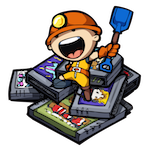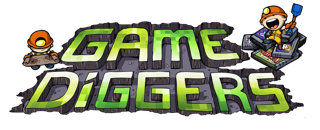We’re playing Commander Keen: Marooned on Mars, the 1st game of the Commander Keen series.
Commander Keen
Commander Keen is truly a legendary game from the 90’s, in it you play Billy Blaze who’s marooned on Mars, after arriving there with his custom build paper space ship. Unfortunately, the pesky Vorticons on Mars have stolen parts from his ship and it’s up to us to get them back!
There’s a total of 4 ship parts that we have to get back, scattered through 4 mayor Vorticon cities across Mars. Fortunately in each levels there are many items to pickup to give Keen extra lives, along with hang tools like his legendary Pogo Stick and a Raygun to zapp those enemies!

Levels build up in difficulties, introducing new enemies to Billy that need to be either evaded or simply taken out. From annoying but harmless Yorp’s, to Clapper’s, Butler Robot’s, Garg’s, Vorticon Robot’s and Vorticons. The introduction of keycards (yellow, blue, red or green) make levels increasingly difficult and growing in size.
 This is what makes Commander Keen such a great game, the depth of levels, increasingly fun and challenging gameplay, different monsters, a cool map-scene and incredibly funny and well done graphics/animations. There are a total of 7 Commander Keen games, we’ll definitively be reviewing other episodes in the future, for now enjoy our vlog on Commander Keen Episode 1: Marooned on Mars!
This is what makes Commander Keen such a great game, the depth of levels, increasingly fun and challenging gameplay, different monsters, a cool map-scene and incredibly funny and well done graphics/animations. There are a total of 7 Commander Keen games, we’ll definitively be reviewing other episodes in the future, for now enjoy our vlog on Commander Keen Episode 1: Marooned on Mars!
Simply put, Commander Keen is truly: A game to treasure.
History behind the game
Commander Keen was created by 4 legendary guys: John Carmack, John Romero, Tom Hall and Adrian Carmack. Thanks to Scott Miller from legendary games publisher Apogee (3D Realms now) and the revolutionary shareware business model, our 4 legendary guys were able to eventually break free from their former employer Softdisk and eventually founded id Software.
Creating Commander Keen was actually a mayor breakthrough in PC gaming, where consoles ruled the market at that time due to superior processors for processing graphical animations, the PC was severely lacking. Consoles did 60 FPS for smooth side scrolling, while the PC wasn’t able to evenly remotely touch that.
PC’s weren’t fit with dedicated hardware specifically for gaming, meaning it just couldn’t possible redraw every part of the screen on each frame. Meanwhile on the NES we had Super Mario Bros as a incredibly smooth side-scrolling experience. Many game developers had tried to solve this problem with different tricks, but none really came close to the experience users were looking for. It was deemed technically impossible.
 That is, until John Carmack came to the realisation that static backgrounds with single colours wouldn’t have to continuously be re-drawn but actually only the items on the screen that would actually change. During the nights (after work) he would create a prototype together with Tom Hall that they called “Adaptive Tile Refresh”. This prototype was a mocked up version of the 1st level of Mario, with one of the original Softdisk characters, scrolling as smoothly as Mario itself! This would be a mayor breakthrough for PC gaming!
That is, until John Carmack came to the realisation that static backgrounds with single colours wouldn’t have to continuously be re-drawn but actually only the items on the screen that would actually change. During the nights (after work) he would create a prototype together with Tom Hall that they called “Adaptive Tile Refresh”. This prototype was a mocked up version of the 1st level of Mario, with one of the original Softdisk characters, scrolling as smoothly as Mario itself! This would be a mayor breakthrough for PC gaming!
They ended up re-creating Super Mario 3 entirely on the PC and sending the floppy off to Nintendo, they just had to release it for the PC and that’s it. Unfortunately Nintendo knew very well that a mayor reason people bought their console was to play these games and refused.
Obviously they were very disappointed and returned to their day-jobs, it was a few months later that John Romero read an article on Apogee and noticed that the address that was listed there was also on a lot of fanmail they had received with different names. Calling Scott Miller to see what was going on, it became clear that he wanted to get into contact as he saw great potential in their skillsets to create games for Apogee. Seeing that this was finally the way for them to use their new technology, they jumped on it.
It’s from this effort that Commander Keen was created, taking the market by storm shortly after it’s released, partially thanks to the ground-breaking shareware model of Apogee. 3 months later they left Softdisk to create, ID Software.


Leave a Reply
You must be logged in to post a comment.